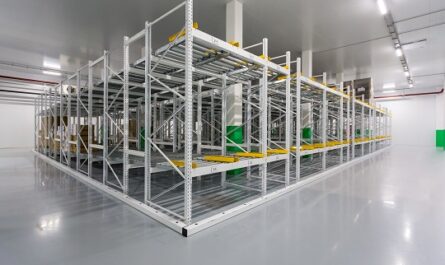Implementing an ERP (Enterprise Resource Planning) system is often seen as a way to reduce human error and streamline business processes. While this is true, it’s important to recognize that ERP systems are not infallible.
In fact, they can sometimes produce incorrect outputs. If you’ve ever faced unexpected errors or questionable data from your ERP system, you’re not alone. Understanding the reasons behind these errors can help you mitigate risks and ensure your ERP system operates as effectively as possible.
Here are the top 10 reasons why ERP systems can generate incorrect outputs.
Before we go further into this topic, don’t forget to follow my LinkedIn account. You’ll get more helpful insights on supply chain management there.
Table of Contents
Inaccurate Data Entry
Imagine entering a crucial sales figure incorrectly. The ERP system will faithfully process this flawed input, leading to misleading reports and potentially misguided business decisions.
Even the most sophisticated ERP systems can’t correct data entry mistakes, so the accuracy of the output is only as good as the data that’s entered.
Accurate data entry is crucial to ensure the system functions correctly and delivers reliable results.
Double-checking entries and implementing data validation rules can help reduce errors.
Think of it like proofreading a critical email before hitting send; a small mistake can lead to significant misunderstandings.
By maintaining high data accuracy, you can trust the outputs your ERP system generates.
Inadequate Training
Have you ever felt lost trying to navigate a new software system?
Without proper training, users can easily make mistakes or misinterpret how the system works, leading to errors.
An ERP system is only as effective as its users. If they don’t understand its functionalities, the risk of errors increases significantly.
Adequate training ensures that users are comfortable with the system and can use it effectively. This includes understanding the system’s features, knowing how to enter and retrieve data correctly, and being aware of common pitfalls.
By investing in comprehensive training programs, you can empower your team to use the ERP system efficiently and reduce the likelihood of errors.
Think of training as providing a map and compass; it guides users through the system and helps them navigate it successfully.
System Customization
Customizing your ERP system to fit your unique business needs can seem like a great idea. However, over-customization can introduce bugs or conflicts that affect output accuracy.
When you alter the system’s core functionalities, you risk disrupting its stability and introducing errors.
While customization can tailor the system to specific needs, it must be done carefully to avoid unintended issues.
Balancing customization with system integrity is crucial.
Think of it like modifying a car; adding custom parts can enhance performance but can also cause problems if not done correctly.
By working closely with experienced developers and thoroughly testing changes, you can ensure that your ERP system remains reliable while meeting your specific business requirements.
You might also like:
- Navigating Port Congestion: Strategies for Supply Chain Managers
- How to Navigate Global Shipping Delays: A Manufacturer’s Guide
Integration Issues
If your ERP system needs to work with other software, poor integration can cause data discrepancies and incorrect outputs.
When systems don’t communicate properly, you might see conflicting data or experience delays in information flow, leading to frustration and potential business risks.
Seamless integration is essential for maintaining data consistency across different platforms.
Imagine trying to sync your calendar across multiple devices without proper integration; appointments might get missed or duplicated.
The same principle applies to ERP systems. Ensuring smooth integration between your ERP and other software helps maintain accurate and up-to-date information, allowing you to make informed business decisions without worrying about conflicting data.
Outdated Data
Using outdated data can produce irrelevant or incorrect results, impacting decision-making.
If your ERP system relies on old information, it can lead to flawed analyses and misguided business strategies.
Outdated data can be especially problematic in fast-paced industries where conditions change rapidly.
Regularly updating data ensures that the ERP system provides current and accurate information.
Think about making decisions based on last year’s market trends; the insights would likely be irrelevant or misleading.
By keeping your data up to date, you ensure that your ERP system delivers reliable outputs that reflect the current state of your business and the market, helping you stay competitive and informed.
Configuration Errors
Incorrect setup or updates can cause the ERP system to malfunction and produce erroneous outputs.
Proper configuration is essential to align the system with your business processes and ensure it functions as intended.
When configurations are incorrect, it’s like trying to drive a car with misaligned wheels; the system may not perform optimally and could lead to costly errors.
Ensuring accurate configuration involves understanding your business requirements and how they translate into system settings.
Regularly reviewing and testing configurations can help identify and resolve issues before they impact operations.
By maintaining careful oversight of system configurations, you can maximize the effectiveness of your ERP system and minimize the risk of producing inaccurate outputs.
Incomplete Data Migration
Incomplete or incorrect data migration to a new ERP system can lead to persistent errors in outputs.
When data isn’t fully transferred or is transferred incorrectly, it can disrupt business operations and compromise data integrity.
This can result in incomplete records, missing information, and inconsistencies across the system.
Ensuring a thorough and accurate data migration process is crucial for a smooth transition and reliable system performance. It’s akin to moving offices without ensuring all files are transferred correctly; important documents might be lost or inaccessible.
By meticulously planning and executing data migration, businesses can minimize disruptions, maintain data consistency, and ensure that their ERP system generates accurate and reliable outputs from the start.
You might also like:
- The Evolution of Supply Chain: Embracing New Challenges and Solutions
- 10 Strategies to Overcome Data Processing Challenges for Supply Chain Teams Lacking Expertise
User Errors
Human errors, such as selecting the wrong options or executing incorrect processes, can lead to inaccurate results in an ERP system.
Even with advanced automation, the system’s output is only as reliable as the inputs provided by users. These errors can range from simple data entry mistakes to more complex configuration errors.
Training and user-friendly interfaces play a crucial role in minimizing these mistakes.
Proper training ensures that users understand how to navigate the system effectively and interpret its outputs correctly. It’s similar to driving a car: understanding the controls and road signs reduces the likelihood of accidents.
By fostering a culture of accuracy and providing ongoing support, organizations can empower users to utilize the ERP system accurately and confidently, thereby reducing the risk of erroneous outputs.
Software Bugs
ERP systems, like any software, can experience bugs or glitches that cause unexpected behavior and lead to incorrect outputs. These bugs can range from minor annoyances to serious issues that affect system stability and data accuracy.
Users may encounter errors such as calculations not processing correctly, reports generating inaccurate data, or system crashes during critical operations.
Regular updates and bug fixes are essential to maintaining system reliability.
Just as you would update your smartphone’s software to fix bugs and improve performance, ERP systems require ongoing maintenance to address issues and enhance functionality.
By staying proactive with updates and promptly addressing any reported bugs, organizations can ensure their ERP systems operate smoothly and deliver accurate outputs consistently.
Lack of Regular Maintenance
Neglecting regular maintenance, updates, and audits can allow small issues to snowball into significant problems that affect output accuracy in an ERP system.
Over time, without routine checks and updates, the system may become sluggish, vulnerable to security threats, or prone to errors.
Regular maintenance is akin to servicing a car regularly: it ensures that all parts are functioning correctly and prevents breakdowns. It involves updating software patches, reviewing system configurations, and conducting performance audits.
By prioritizing regular maintenance, organizations can optimize the performance of their ERP systems, mitigate risks, and maintain high-quality outputs consistently.
Conclusion
While ERP systems are powerful tools for reducing human error and improving efficiency, they are not immune to issues that can lead to incorrect outputs.
By staying vigilant, investing in proper training, maintaining data accuracy, and ensuring regular system maintenance, you can minimize these risks.
Understanding and addressing the common causes of ERP system errors allows businesses to leverage these systems more effectively and maintain high-quality outputs.
If you’ve encountered any of these issues, you’re not alone, and there are steps you can take to improve your system’s reliability.
I hope you find it helpful!
Please share this article with your colleagues so they can also benefit. For more insights on supply chain management, follow my LinkedIn account. You’re free to use all articles on this blog for any purpose, even for commercial use, without needing to give credit.
 by
by 
